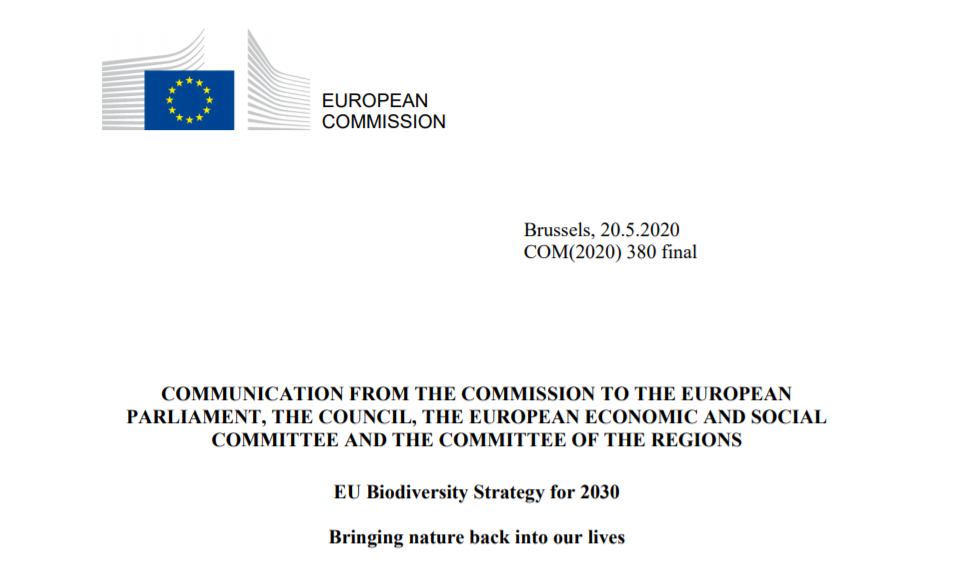COMMUNICATION FROM THE COMMISSION TO THE EUROPEAN PARLIAMENT - EU Biodiversity Strategy for 2030

COMMUNICATION FROM THE COMMISSION TO THE EUROPEAN PARLIAMENT - EU Biodiversity Strategy for 2030
Green roofs as the principal method for urban and peri urban adaptation to climate change.
Action by municipalities and the Portuguese government is needed!
𝟮.𝟮.𝟴. 𝗚𝗿𝗲𝗲𝗻𝗶𝗻𝗴 𝘂𝗿𝗯𝗮𝗻 𝗮𝗻𝗱 𝗽𝗲𝗿𝗶-𝘂𝗿𝗯𝗮𝗻 𝗮𝗿𝗲𝗮𝘀
"Green urban spaces, from parks and gardens to 𝗴𝗿𝗲𝗲𝗻 𝗿𝗼𝗼𝗳𝘀 and urban farms, provide a wide range of benefits for people. They also provide opportunities for businesses and a refuge for nature. They reduce air, water and noise pollution, provide protection from flooding, droughts and heat waves, and maintain a connection between humans and nature.
This strategy aims to reverse these trends and stop the loss of green urban ecosystems. The promotion of healthy ecosystems, green infrastructure and nature-based solutions should be
systematically integrated into urban planning, including in public spaces, infrastructure, and the design of buildings and their surroundings. To bring nature back to cities and reward community action, the Commission calls on European cities of at least 20,000 inhabitants to develop ambitious Urban Greening Plans by the end of 2021. These should include measures to create biodiverse and accessible urban forests, parks and gardens; urban farms; green roofs and walls; tree-lined streets; urban meadows; and urban hedges. They should also help improve connections between green spaces, eliminate the use of pesticides, limit excessive mowing of urban green spaces and other biodiversity harmful practices. Such plans could mobilise policy, regulatory and financial tools."
Full document here